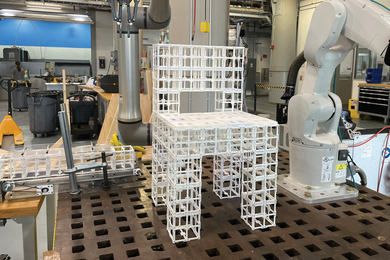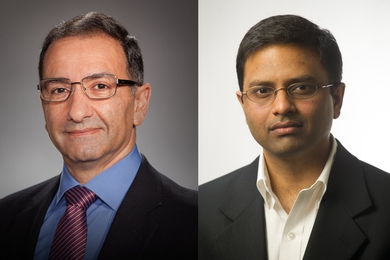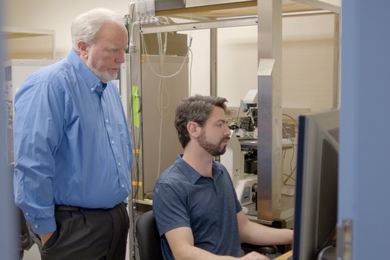Pressed blue suits for both men and women, conservative striped ties and understated jewelry, and wingtips and two-inch heels replaced jeans and running shoes for job candidates who met recently with prospective employers through the MIT Careers Office.
The promise of stock options and outrageous starting salaries that existed when the Class of 2003 entered MIT has been succeeded by an era when recruiters woo candidates with plastic rulers and pens emblazoned with the company logo. But while the dynamics of the playing field have changed with the shrinking economy, MIT graduates can still find good jobs at decent pay.
"The difference between 1999 and 2003 is now job-seekers must be more resourceful, more vigilant and certainly more flexible in their job search," said Jason M. Wall, associate director of employee relations for the Careers Office. "Simply because a host of dot-com startups with little chance of generating a profit are no longer artificially lowering the jobless rate as they've done over the last three years, it would be defeatist and not very useful to believe a job cannot be found."
The 2002 Graduating Student Report conducted by the Careers Office revealed that MIT students earned 23 percent more than the average starting salary of their peers across the country. Forty-five percent of the class (1,004 students) participated in the survey.
Electrical engineering and computer science majors received an average starting salary of $63,263, or 21 percent more than the average, reported the National Association of Colleges and Employers (NACE). Sloan graduates earned $53,114, or 25 percent above the NACE average.
Although on-campus recruiting has reflected the sluggish economy since 2000, hundreds of domestic and international companies still recruited at MIT this year. The 2002 Career Week in September, a career fair for the Class of 2003, attracted more than 100 companies, most of which paid a basic fee of $1,000. In addition, more than 20 firms comprised an elite group of sponsors that paid more than $200,000 to participate, led by Schlumberger with $8,000.
"This is impressive," said Wall. "At minimum, it belies the impression that there are fewer job opportunities in the U.S. job market for MIT students."
Wall urges students to look for hidden opportunities in the changing job market. "The key to handling a hostile job market is flexibility," he said. "The more flexible you are in your thinking--what you will try, where you will research opportunities and, to some extent, what you will risk--the higher your chances are of surviving in any economy."
Flexible career management requires an understanding of one's own skills, knowledge and goals to develop "the ability to conduct an efficient and targeted job search which will succeed in any job market," Wall said. The Careers Office uses counseling and formal self-assessments to help students develop this flexibility. Job search techniques--networking, resume writing, interviewing, etc.--are the basis for most Careers Office workshops.
Symposium for grad students
A day-long Graduate Student Career Symposium will be held at the Stratton Student Center on Saturday, March 8. Designed especially for master's and doctoral students, the event will focus on non-academic careers and will include alumni panels on government service/international development, management/technical consulting, entrepreneurial careers, environmental careers and patent law.
The program--sponsored by the MIT Careers Office, the Graduate Student Office and the Graduate Student Council--will include lunch and other opportunities for informal networking. Enrollment is limited to graduate students and preregistration is required; see http://web.mit.edu/career/www/gradsym.htm.
The Class of 2002 after graduation:
Average starting salaries by degree:
S.B. ................. $52,132
S.M. ................ $66,613
M.Eng. ............ $63,467
M.B.A. ............ $91,960
Top five employers, in order: Oracle, Goldman Sachs, MIT, IBM and Merrill Lynch
77 percent of international students found jobs in the U.S.
2 percent of American citizens accepted jobs outside the U.S.
12 percent work for non-profits
23 percent stayed in Massachusetts
7 percent accepted government jobs
4 percent work in the defense sector
Top five graduate schools by number of acceptances: MIT, Harvard, University of California-Berkeley, Stanford and the California Institute of Technology.
Source: MIT Careers Office 2002 Graduating Student Survey
A version of this article appeared in MIT Tech Talk on March 5, 2003.






